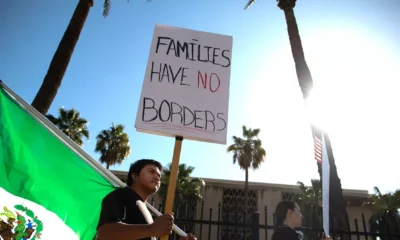ADOH
Arizona’s Housing Fork: Paving Paths for Thriving Families

Arizona families are confronted with grim realities as soaring housing costs challenge their day-to-day survival. Since 2019, home prices have skyrocketed by 57%, forcing more than half of renters to allocate over 30% of their income towards housing. If this trend persists, Maricopa County may take 85 years to address its housing shortage.
Behind these figures lie personal stories. Seniors wait in vain for affordable housing while rent prices continue to climb. Frontline workers—nurses, teachers, and grocery clerks—find themselves unable to afford to live in the communities they serve. This situation transcends mere challenges; it requires urgent leadership and concrete solutions.
ADAOH serves as a critical resource for the state.
The Arizona Department of Housing (ADOH) is vital to developing affordable housing rather than a political pawn. In the previous year, they made significant strides by distributing over $1.24 billion in aid, which assisted in financing thousands of affordable housing units across Arizona. Although a recent audit highlighted areas for improvement, ADOH has initiated measures to enhance transparency and operations. Claims about a 2023 wire scam involving $2 million (a mere 0.2% of annual funds) often omit the fact that insurance covered the loss, and new policies have since been enacted. Denying ADOH the stability it needs through short-term renewals is not a prudent financial strategy; it jeopardizes families’ futures.
The Low-Income Housing Tax Credit (LIHTC) has historically supported affordable housing initiatives but struggles to meet current demands due to Arizona’s rapid growth. Currently, only 8.5% of new housing qualifies as affordable. The state’s LIHTC program, initiated in 2021, effectively mobilizes private and federal investments, generating $745 million in economic activity, creating 4,500 jobs, and producing $8 million in annual tax revenue. However, a funding cap of $4 million remains stifling, affecting the program’s ability to scale effectively. Legislative action is critical by December 2025 to extend and expand support for this crucial resource.
Rural communities are seeing real change.
In Globe, historic structures like the Hill Street School are being transformed into 64 affordable senior housing units, backed by $1.5 million in federal tax credits and a $1 million state credit. In Prescott Valley, similar efforts will result in 72 affordable homes for low-income seniors, addressing urgent needs in rural areas. These developments owe their viability to the financial support from the state’s LIHTC program.
The moment for decisive action is now. Lawmakers must choose between genuine investment in Arizona’s future or allowing political short-sightedness to exacerbate the ongoing housing crisis. A one-year renewal for ADOH and the elimination of state LIHTC funding would represent a significant failure in leadership.
Existing solutions can lead to meaningful change. ADOH is already achieving results, and the LIHTC framework fosters economic stability and growth. However, the missing element is the political will to act.
Only strong, long-term measures will effectively address this crisis. Lawmakers must back a four-year renewal for ADOH to ensure sustained investment and strategic planning. Additionally, expanding the LIHTC program can lead to greater housing availability, job creation, and stronger communities.
Failure to act carries significant consequences, manifesting in fewer homes, a sluggish economy, and a rise in homelessness. Conversely, bold action offers stability and opportunity for Arizonans. Families cannot afford to wait—whether 85 years or even 85 days. It is time for lawmakers to prioritize long-term solutions over political maneuvering.
Nicole Newhouse serves as the Executive Director of the Arizona Housing Coalition.


















